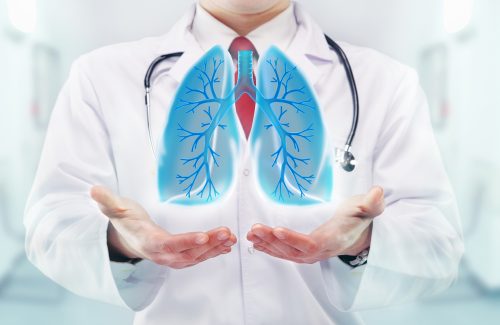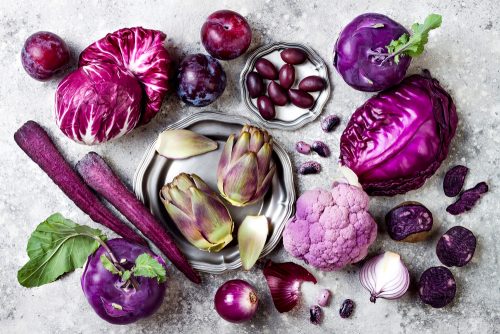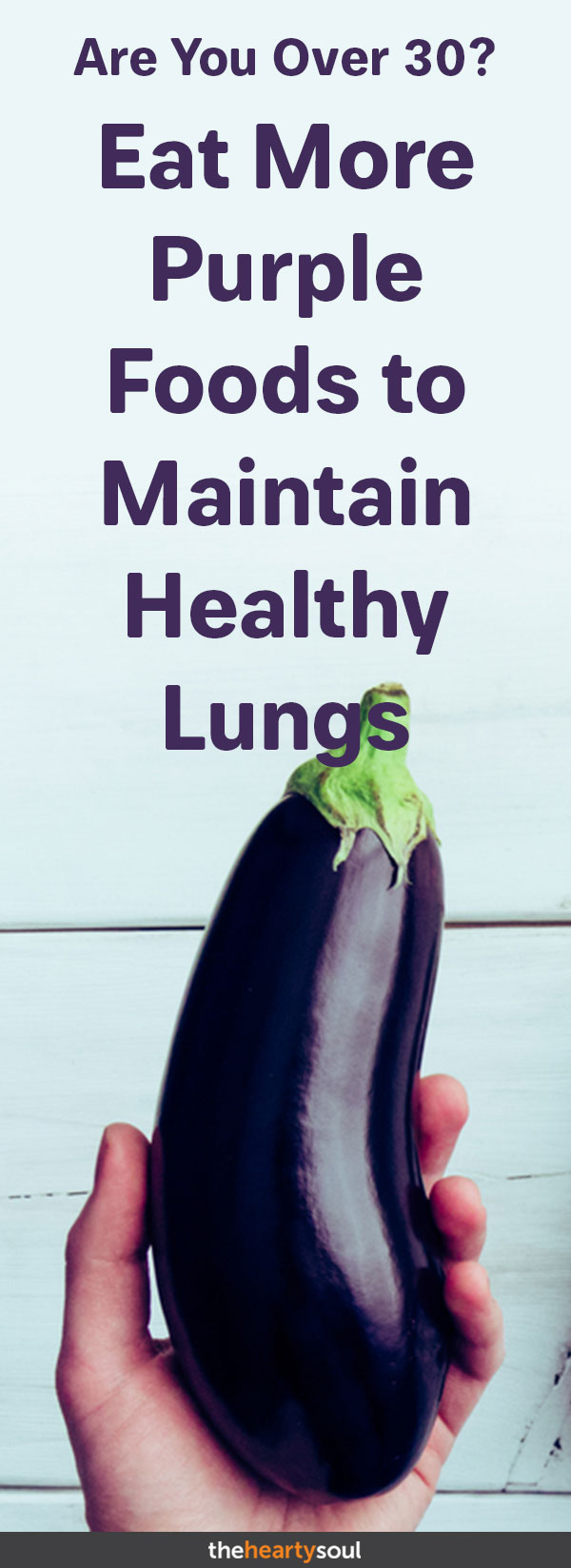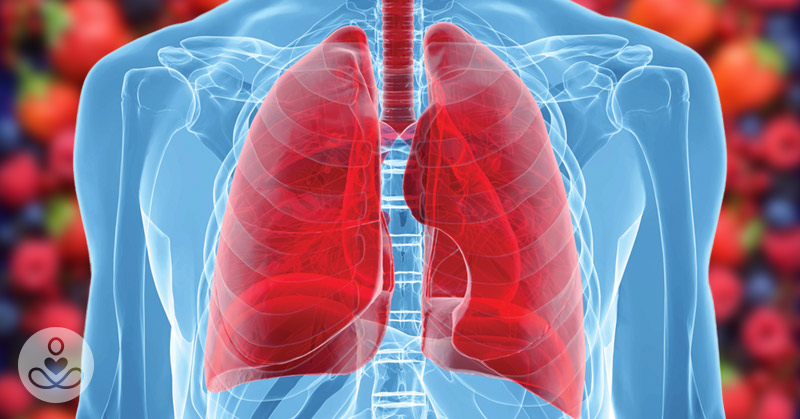It’s not just lifelong smokers that need to worry about the health of their lungs. There is evidence to show that the health of everyone’s lungs will begin to decline after the age of 30, regardless of if you’ve had trouble breathing in the past or not.
Study Shows That All Lungs Are Proven to Decline After Age 30

One study analyzed data from 463 British and Norwegian adults with an average age of 44. The data included dietary information and a spirometry test, which measures the amount of air you can exhale in one second, and the total number of air you can exhale after taking a breath, and the ratio of the two[2].
According to this study, and author Vanessa Garcia Larsen, Ph.D., assistant professor in the Human Nutrition Division of the Department of International Health at the Johns Hopkins Bloomberg School of Public Health, our lung function begins to decline after the age of 30[3].
The American Lung Association supports that notion by telling us that our lungs reach maturity by the time we are 20-25 years old, and then begin to decline[1]. This is a natural aging process that happens to everyone, but it means that breathing will become more difficult for us all as we get older.
But, not everyone’s lungs decline at the same speed. There are factors that will increase the speed at which a lung will decline, such as:
Smoking
“For smokers, quitting remains the best thing they can do to protect their health,” advises Dr. Larsen.
Smoking has long been associated with lung decline and breathing issues, and it will only speed up the deterioration process for you. If you are a smoker, whether it be on a daily-basis or occasional, find a method for quitting that will work for you and your lifestyle, and keep your lungs healthy.
Lack of Exercise
It won’t be news to you that every human needs physical activity in order to keep the body strong and healthy. But, studies have shown that exercise can actually improve lung function by strengthening the respiratory muscles[5].
If going to the gym isn’t necessarily your thing, you can find enjoyable and convenient ways to fit your daily exercise into your schedule. Go for a walk, ride a bike, take a relaxing yoga class. Finding ways to exercise that fit your life will help to strengthen your lungs and slow their decline.
Exposure to Pollutants
Our lungs are very good at filtering out the air that we breathe, but in today’s modern age there are a lot of pollutants that we are exposed to that are not doing our lungs any favors. Keep your exposure to a minimum by using natural cleaning products and avoid spraying pesticides.
Pre-existing Medical Condition
All of our organs are connected to each other, and they all rely on the proper function of each working unit in order for the body to run smoothly. So, when you have a medical condition, it will inevitably affect the entire body, including the health of the lungs.
In order to keep your lungs as healthy as possible, focus on keeping your whole body healthy. Take care of any medical conditions that you may have, mental or physical, and tune into the way that your whole body is feeling because your overall health will affect your lungs as well.
Poor Diet
Consuming processed foods (particularly processed meats) will lead to lungs declining at a faster rate. By maintaining a healthy diet, full of fruits and vegetables, will help to keep your body healthy as a whole, which will slow the decline of your lungs.
Just as our lungs decline faster based on our habits, we are also able to slow down the deterioration, simply by changing the foods that we eat.
Anthocyanins May be the Key to Slowing Lung Decline
Anthocyanins, which are a plant-produced chemical found in many fruits and vegetables, have been shown to have antioxidant and anti-inflammatory properties[2]. They are often seen in plants with pigments that are vibrant in colors like red and purple.

In the same study mentioned above, the individuals with a higher anthocyanin intake had a significantly reduced decline in lung function measurements, proving that anthocyanins may be the key to slowing our lung decline[2].
So how do we get more anthocyanins in our diet? We consume more foods that contain them.
25 Foods That Are High In Anthocyanins
Anthocyanins are present in a great number of fruits and vegetables, but there are some that have a higher concentration per serving. The following is a list of the fruits and vegetables that are high in anthocyanins, and each food item contains the number of anthocyanins contained in 100g of each food.
1. Purple (Blue) Corn (generally found in corn tortillas or chips) – 1,642 mg
2. Concord Grapes: 192 mg
3. Eggplants: 750 mg
4. Chokeberries: 2,147 mg
5. Blackberries: 353 mg
6. Elderberries: 1,993 mg
7. Black Raspberries: 845 mg
8. Blueberries: 529 mg
9. Blackcurrant: 533 mg
10. Marion Blackberry: 433 mg
11. Red Wine: 35 mg
12. Blackberries: 353 mg
13. Red Onions: 39 mg
14. Oranges: 200 mg
15. Red Grapes: 43 mg
16. Sweet Cherries: 177 mg
17. Strawberries: 69 mg
18. Cranberries: 91 mg
19. Black Plums: 82 mg
20. Red Cabbage: 113 mg
21. Raspberries: 116 mg
22. Pink Grapefruit: 200 mg
23. Red Radishes: 116 mg
24. Pomegranates: 92 mg (varies greatly)
25. Asparagus (purple variety): 205 mg[4]
There are many other foods that contain anthocyanins (like black beans, peaches, and kidney beans) but listed above are the ones that are highest in anthocyanins, and thus will give you the highest level of health-improving antioxidants to keep your lungs from declining.
As much as we try to fight it, we are all going to age. It is a natural part of life, and it’s best for us to just accept it and appreciate the stage in life that we’re at, whichever stage that may be. After the age of 30, our lungs may start to decline, but it’s comforting to know that there are things that we can do to help keep our health optimal so that we can move through the aging process smoothly, with a smile on our faces.

Sources
- American Lung Association. Lung Capacity and Aging. https://www.lung.org/lung-health-and-diseases/how-lungs-work/lung-capacity-and-aging.html
- American Thoracic Society. (2018, May 21). Flavonoids may slow lung function decline due to aging. ScienceDaily. Retrieved June 8, 2018 from www.sciencedaily.com/releases/2018/05/180521131841.htm
- Wu, X., Beecher, G. R., Holden, J. M., Haytowitz, D. B., Gebhardt, S. E., & Prior, R. L. (2006). Concentrations of Anthocyanins in Common Foods in the United States and Estimation of Normal Consumption. Journal of Agricultural and Food Chemistry,54(11), 4069-4075. doi:10.1021/jf060300l
- Azad, A., Gharakhanlou, R., Niknam, A., & Ghanbari, A. (2011). Effects of Aerobic Exercise on Lung Function in Overweight and Obese Students. Retrieved June 8, 2018, from https://www.ncbi.nlm.nih.gov/pmc/articles/PMC4153158/

